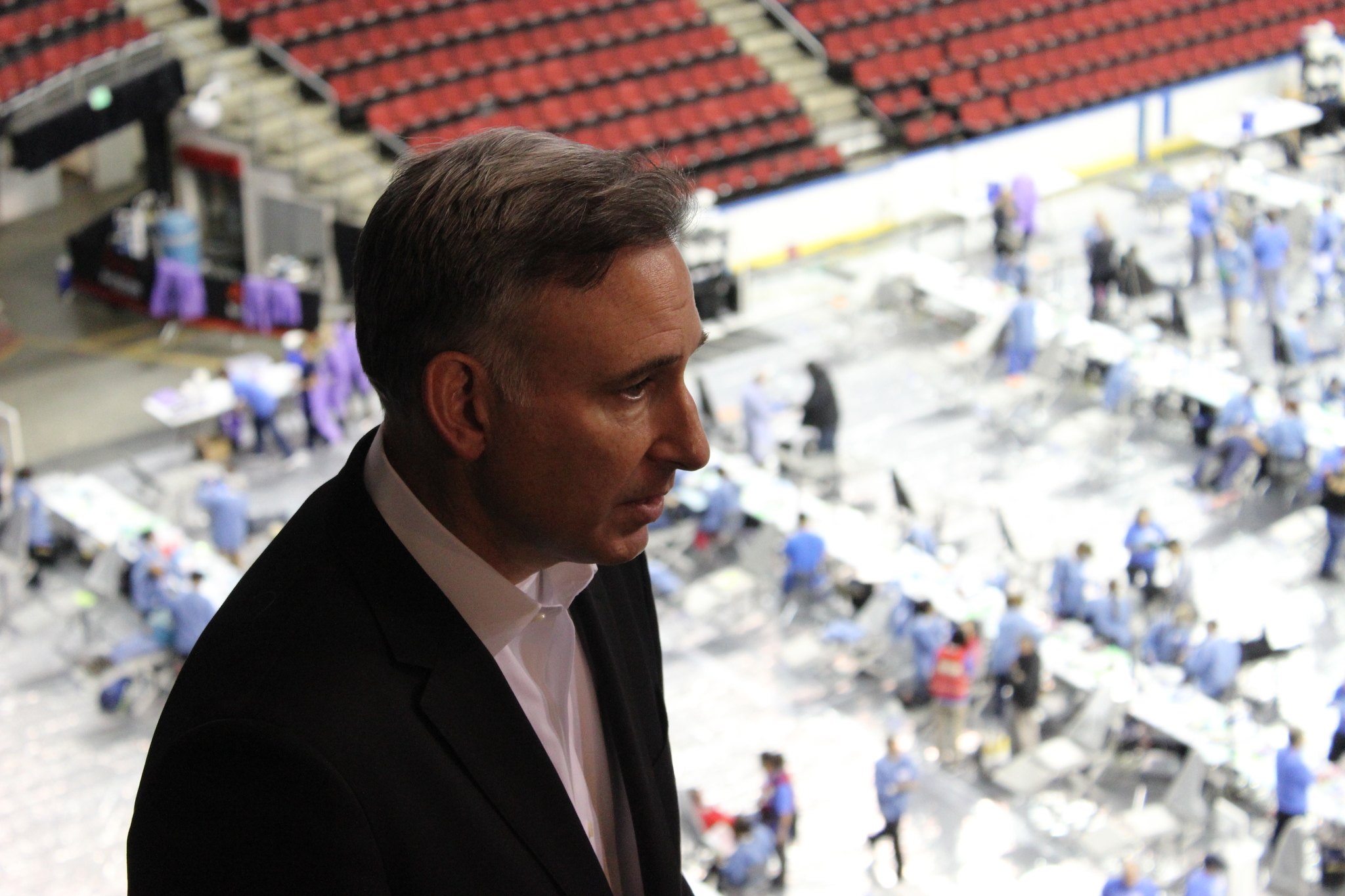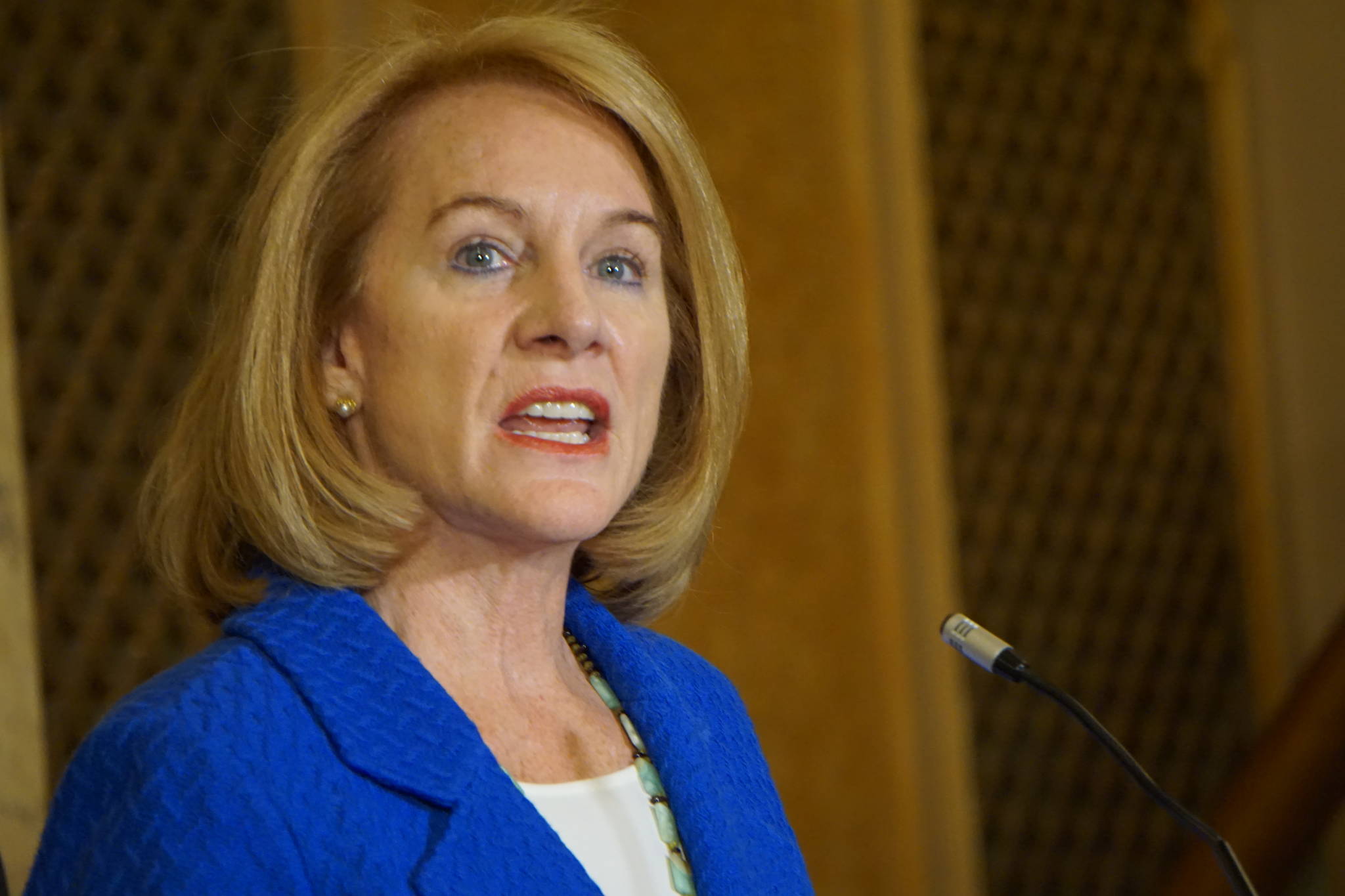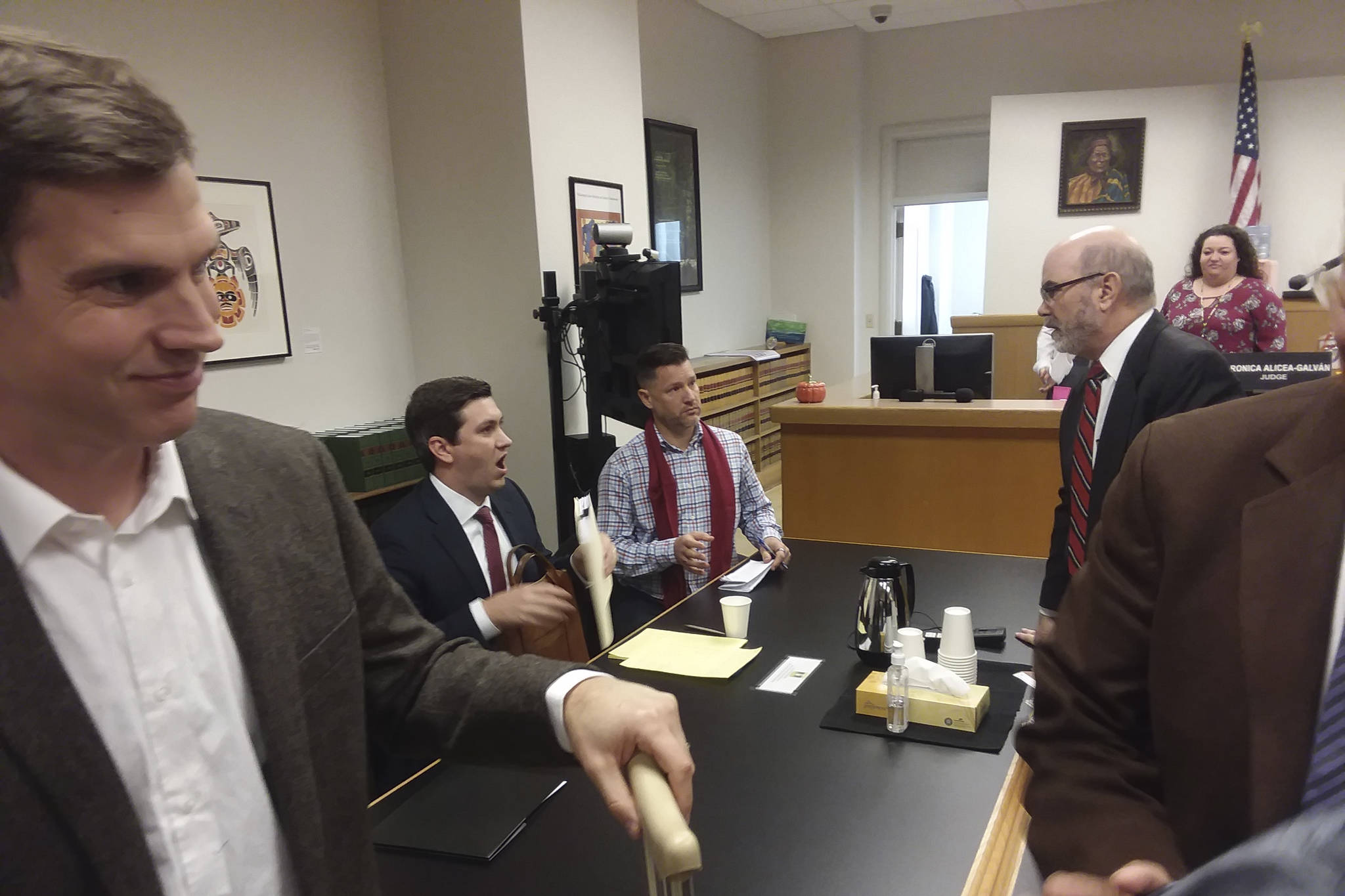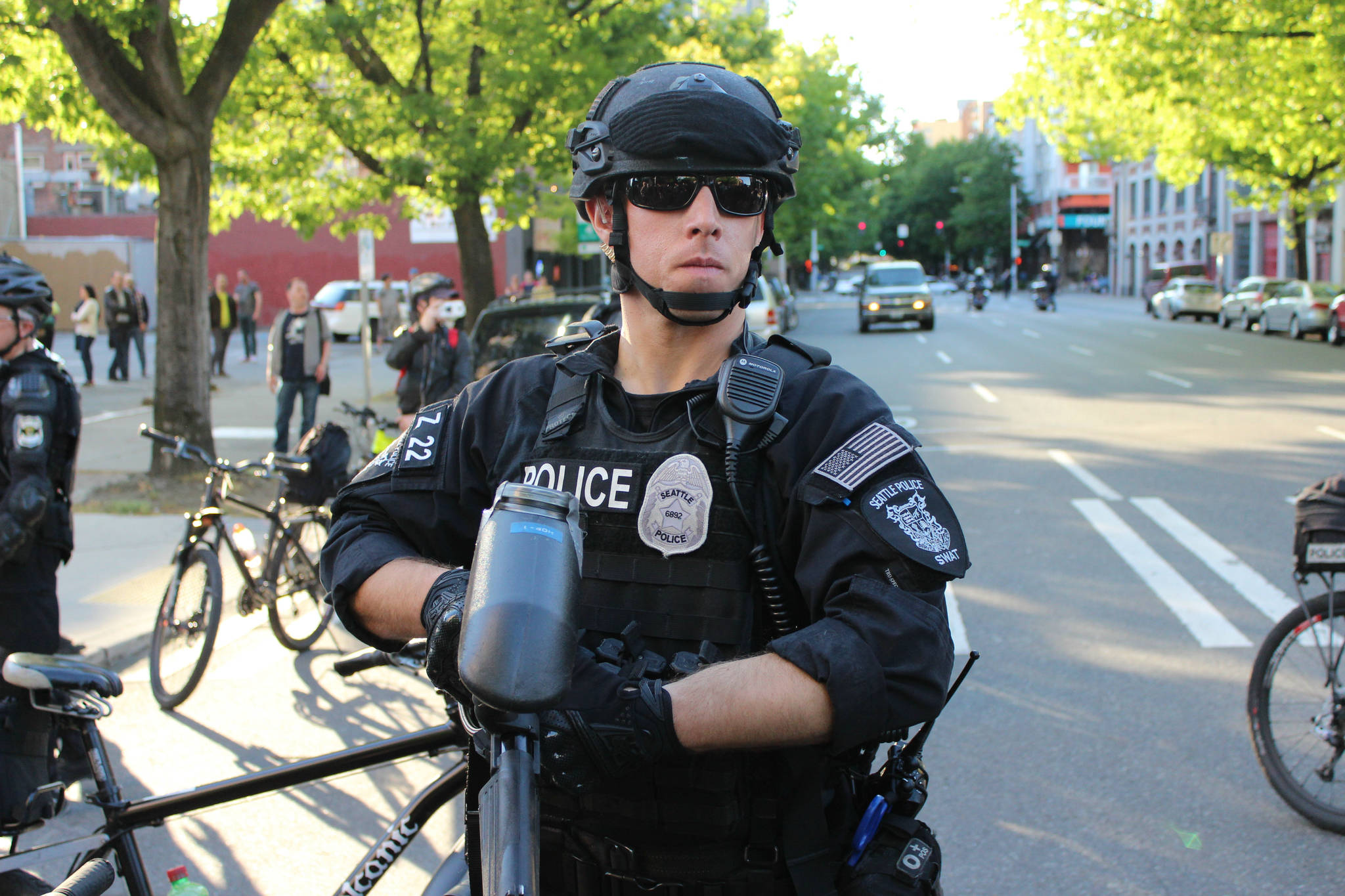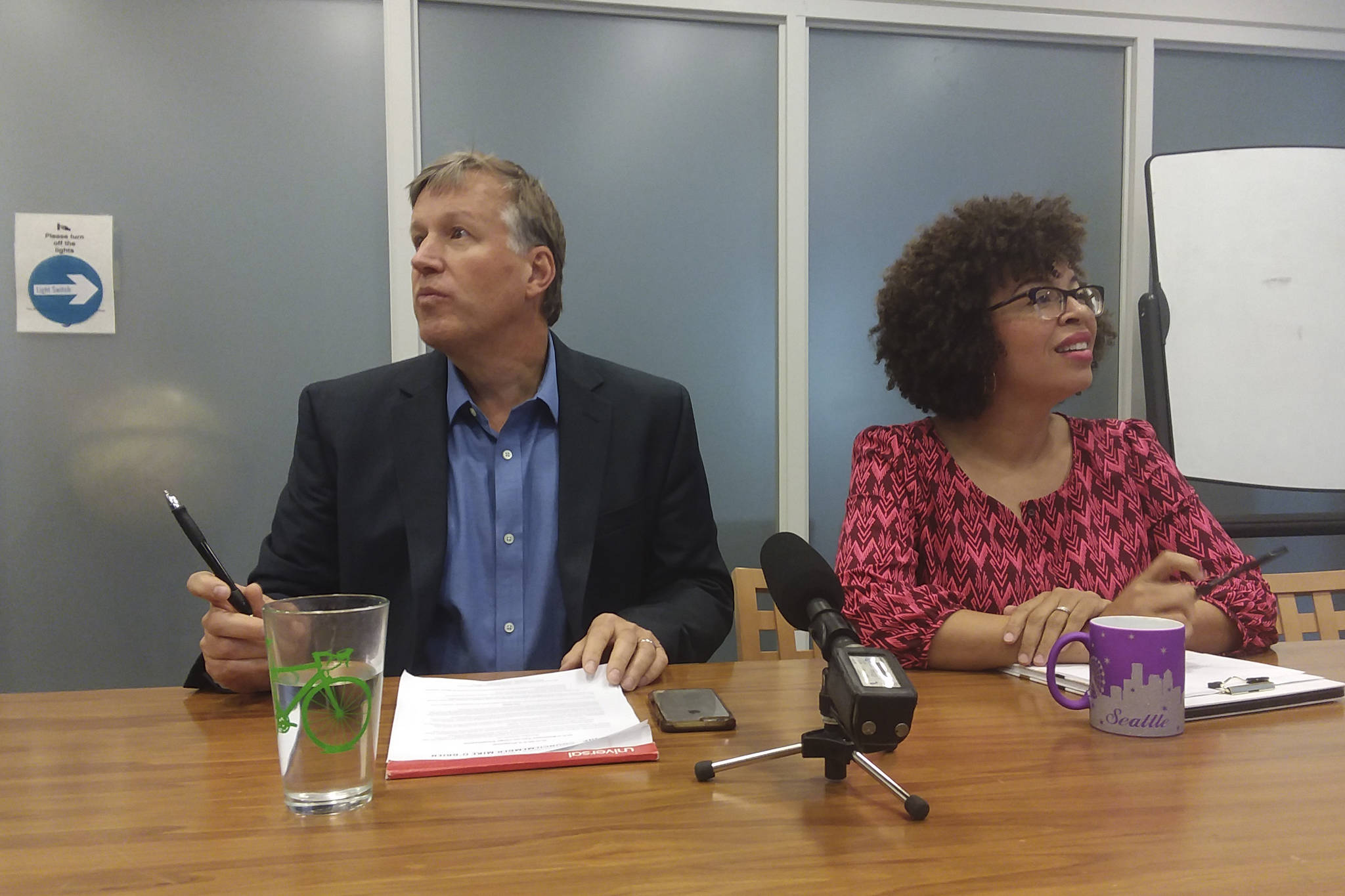Hundreds of people patiently stand in line at the entrance to Key Arena. Volunteers in green t-shirts hand them numbers and route them one by one to a long stretch of fold-out tables where other volunteers will help figure out where to send them. Some of the people carry backpacks, others accompany children.
These people are here for medicine. For four days, Key Arena has been transformed from just another Seattle sportsball arena to a gigantic, volunteer-run health clinic. In the arena’s core is a wide basketball court covered in clear plastic sheeting that slips beneath sneakers so it feels like you’re walking on ice. The “ice” is covered in medical professionals wearing blue or purple scrubs. Tall screens seperate the working floor from the gymnasium seats, where patients wait to be seen. In the halls outside are staging areas for other services, such as signing up for health insurance.
Juan, 32, sits beside his young daughter in the stadium seats, waiting for a dental cleaning. Speaking in broken English, he says that he’s here because he has no insurance.
Miranda Hawker, 60, says she came down from Snohomish County to get treated. She has health insurance and social security, she says, but not dental or vision insurance. The costs of copays and medication make it difficult for her to make ends meet. “I’m getting a dental cleaning, I got a flu shot,” she says. “I want to get some glasses and a new pair of shoes.”
Selamawait Tesfaye, 40, immigrated from Ethiopia via Italy seven years ago, she says. She lost her employer health insurance two and a half years ago, she says. “I have dental problem and visual problem and everything,” she says, “because I don’t have insurance.”
Based on data gathered last year, nearly half the patients who come to this clinic are renters. Another 10 percent are homeowners. 4 percent live on the street. About as many are working as are unemployed. Most come from King County.
We asked Public Health Seattle/King County director Patty Hayes how it is that so many people need charity medical care. After all, medical uninsurance rates in King County have plummeted in the past few years since the Affordable Care Act (Obamacare) started rolling out. Hayes explains that part of the problem is that the ACA doesn’t constrain costs for followup procedures. “It did a beautiful job getting free preventative care for folks…and making sure there was continuity, that people couldn’t get kicked off their health insurance,” she says. “But, for example, if you get a breast screening test, which is covered, there’s a problem: there’s going to be cost under your health plan to go the next step, to have the biopsy.” High copays are also a problem, she says. There are also the people left out of the ACA, including undocumeted immigrants and people who immigrated less than five years ago (which prevents them from qualifying for Medicaid), says Hayes.
Yesterday, on the first day of the clinic, Dr. Tom Dodson, chair of Oral and Maxillofacial Surgery at UW’s school of dentistry, chatted in the center of the plastic-covered basketball court with his colleague Dr. Bob Dixie, a semi-retired Bellevue dentist. It was a slow day in the dental surgery section. “It turns out, for reasons that are a little bit of a mystery to us, we’re a little slow on the surgery side,” says Dodson, “whereas a lot of people are getting fillings, root canals, what we call ‘flippers’—replacements of missing teeth being done.” One possible reason, he said, is that Washington Medicaid already covers tooth extractions.
“If there’s not a waiting list, you can do quite a bit on one patient,” said Dixie. “This morning I [removed] 12 teeth where [the patient] was originally scheduled to do six.”
Dodson said he was surprised by how sophisticated his patients have been. “It requires discipline and organization to line up last night, get yourself in line, and stay through this. One of my patients was here yesterday afternoon, waiting in the rain all night. [We] opened the doors at midnight, started letting people in.”
Dodson and Dixie both worry that their work here is good but inadequate. “Today’s kind of a bandaid,” said Dixie.
OK. How do we fix that? How do we get to a point where a massive annual emergency clinic is no longer needed?
Simple, Dodson say: “Ask the state legislature to pay a fair sum for the work that needs to get done for Medicaid patients.” At UW, he says, extra subsidies allow them to afford to care for Medicaid patients. “But for people in private practice, it costs them more than what they get paid for each patient.”
Dixie agrees. When colleagues refer a Medicaid patient to him, Dixie says, “It’s easier for us to say, ‘Sure, send them over, we’re not going to charge them anything.’…[but] there’s no compensation for it,” he says. “Paperwork takes far longer than it’s worth to try to get any renumeration.”
“If [state legislators] were to increase the [Medicaid] fees by 50 percent or 70 percent of what they’re paying now,” Dodson concludes, “we wouldn’t need this clinic.”
Correction: An earlier version of this post inaccurately stated that most clinic patients are working. In fact, 36 percent work full or part time and 38 percent are unemployed.
